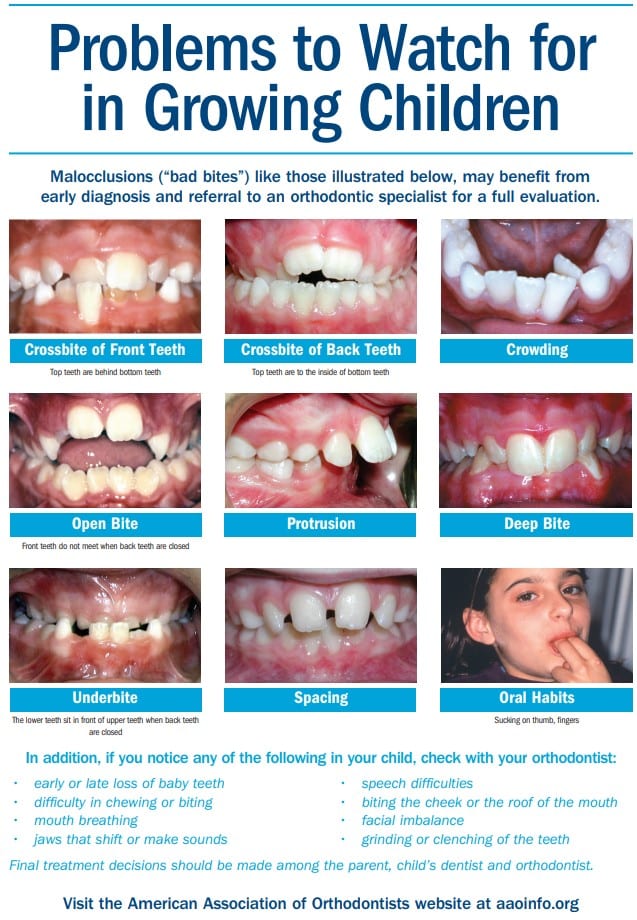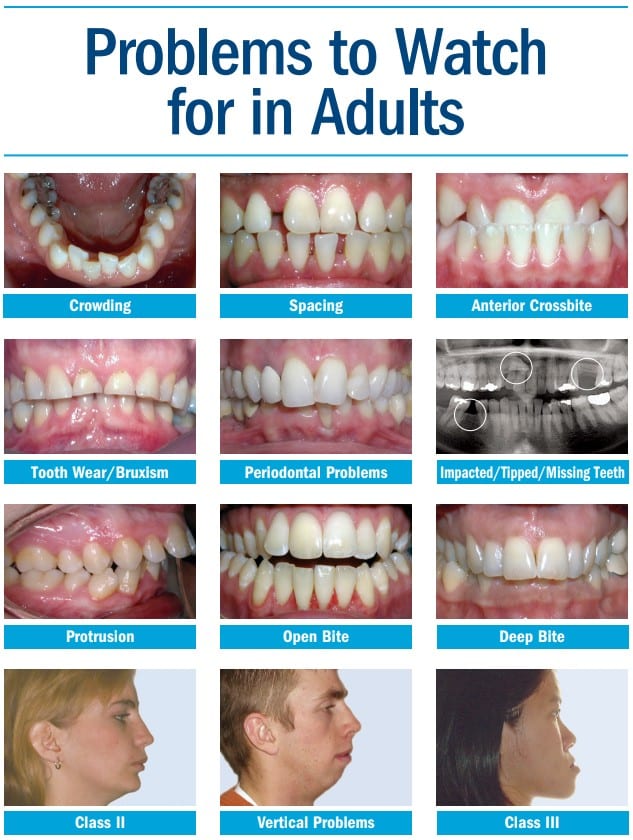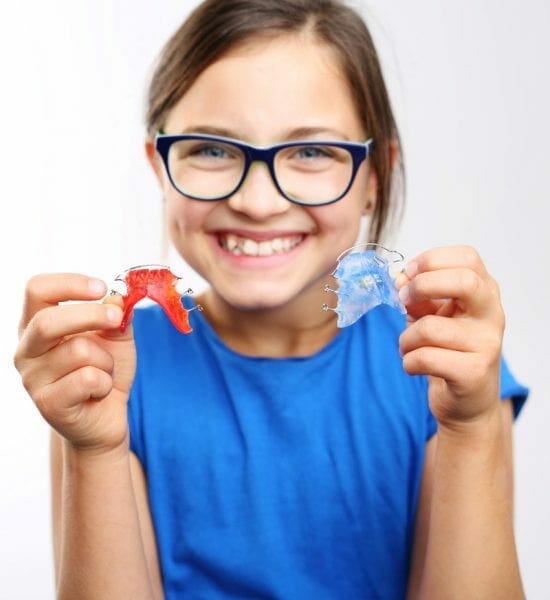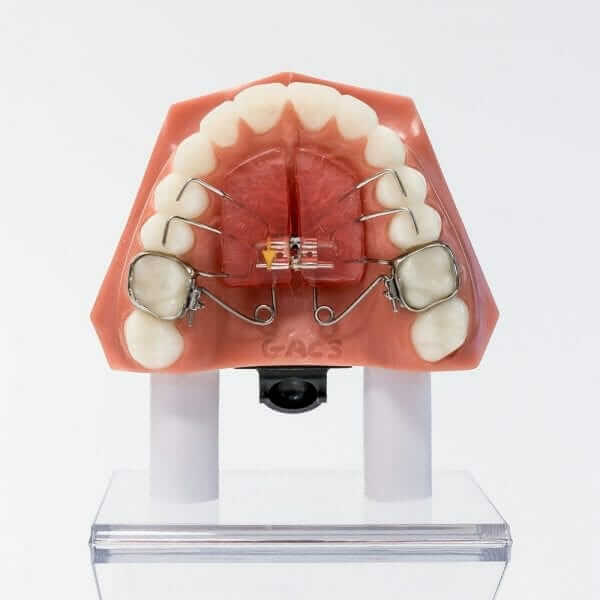Understanding Orthodontic Treatment Terms
Most people have a general understanding of common orthodontic terms, such as braces or Invisalign. However, most people are not familiar with many of the more specific terms related to different orthodontic treatments.
To help educate our patients about the various devices that may be used during orthodontic treatment, we have put together a glossary of orthodontic terms. Because not all patients will have the same treatment, we’ve divided the list into general categories.
General Orthodontic Terms
These terms refer to the types of problems corrected by orthodontics, diagnostic tools, and accessories that may be used during orthodontic treatment; also included is information about the structure of the mouth, teeth, and jaws.
- AcceleDent: Portable, removable orthodontic accessory that helps Invisalign aligners to fit well against the teeth
- Anterior: Toward the front of the mouth
- Appliance: Any orthodontic device (either attached or removable) that is designed to move teeth, reposition the jaw, or hold teeth in place
- Arch: The set of teeth in the upper or lower jaw
- Bite: How the top and bottom teeth come together. Ideally, each tooth meets its opposite tooth so that biting, chewing, and speaking function normally. Also called occlusion.
- Cone Beam CT: A 3D x-ray. Burke and Redford Orthodontists uses a 3D imaging system called the Planmeca ProMax 3D.
- Diastema: Gap between two teeth next to each other, usually between the upper front two teeth
- Eruption: The process by which teeth enter the mouth
- Interceptive Orthodontics: Orthodontic treatment that intercepts or corrects developing problems. Usually performed on younger patients who have a mix of primary (baby) and permanent teeth. Sometimes also referred to as Phase 1 orthodontic treatment.
- Intraoral Scanner: A device that enables an orthodontist to take a digital impression of a patient’s teeth. Eliminates the need for traditional “gooey” molds. Burke and Redford Orthodontists uses an iTero intraoral scanner.
- Malocclusion: Latin word for “bad bite.” In orthodontics, it means the teeth do not fit together properly.
- Occlusion: Latin word for bite
- Orthognathic Surgery: The technical term for corrective jaw surgery. Usually requires the use of braces in conjunction with the surgery. An orthodontist works closely with an oral and maxillofacial surgeon as a team.
- Palate: The roof of the mouth
- Posterior: Toward the back of the mouth
- Primary Teeth: Baby teeth

Orthodontic Terms Related to Bites
The goal of orthodontic treatment is not just to straighten teeth. Correcting bite problems is another of the primary goals of orthodontic treatment. The following terms are used when referring to bite issues.
- Class I Malocclusion: Bite problem where the back molars meet properly in the front-to-back direction, but the front teeth may be crowded or spaced apart. May include a deep bite, open bite, posterior crossbite, or anterior crossbite.
- Class II Malocclusion: Bite problem where the lower teeth/jaw set back relative to the upper teeth/jaw. These types of bites often present with the upper front teeth protruding forward and are often referred to as “overbites”.
- Class III Malocclusion: Bite problem where the lower teeth/jaw set ahead of the upper teeth/jaw.
- Closed Bite or Deep Bite: Also known as a deep overbite, a closed bite happens when the upper front teeth excessively overlap the bottom front teeth in the vertical direction.
- Crossbite: Upper back teeth are in a crossbite if they contact inside or excessively outside of the lower back teeth. Lower front teeth are in crossbite if they erupt in front of the lower front teeth. A crossbite can affect a single tooth or groups of teeth.
- Overbite: Upper front teeth excessively overlap the lower front teeth. When used by orthodontists, this refers to excess overlap in the vertical direction. When used by laypersons, this refers to excess horizontal overlap.
- Overjet: The amount of horizontal space between the upper and lower front teeth. Excess overjet is the term commonly used for protruding upper front teeth or “buck teeth”.
- Open Bite: Malocclusion in which teeth do not contact each other. An anterior open bite means the front teeth have vertical space between them when the back teeth are closed together. A posterior open bite means the back teeth do not touch when the front teeth are closed together.
- Underbite: Lower front teeth or jaw sit ahead of the upper front teeth or jaw (also known as Class III malocclusion).
Orthodontic Terms Related to Braces
Braces are commonly used to correct bite problems and align teeth. There are many different types of braces and different terms associated with their use.
- Archwire: The metal wire that is attached to brackets and used to move teeth
- Bands: Ring shaped braces that go around the entire tooth. Typically, only used around back molar teeth when something more stable than a bracket is needed.
- Braces: Term describing a fixed (non-removable) orthodontic system comprised of brackets, bands, and wires.
- Bracket: A small metal, ceramic, or plastic attachment bonded to each tooth with tooth-colored adhesive. The bracket has a slot that the archwire fits into.
- Ceramic Braces: Braces where the brackets are made from tooth-colored or clear ceramic; additionally, the archwire may be white or clear
- Chain: Stretchable strand of elastic o-ties connected together and placed around each bracket to hold the archwire in place and close spaces between teeth.
- Damon Braces: A self-ligating braces system
- In-Ovation System Braces: A self-ligating braces system
- Lingual Braces: Braces that are applied to the inside of the teeth, making them almost invisible. May cause speech difficulties.
- O-ties: Also known as elastics ties or ligatures, these tiny rubber rings hold the archwire in place (with traditional brackets) or are used simply as decoration (with self-ligating brackets). Patients can choose from a variety of colors.
- Self-Ligating Braces: Braces that use a built-in mechanism in the bracket that holds the archwire in place without o-ties.
- Wax: Soft material that can be used to prevent brackets and archwires from rubbing the inside of the mouth; used during early period of orthodontic treatment when getting used to the braces.

Orthodontic Terms Related to Invisalign
Invisalign is an orthodontic treatment system that uses a series of clear aligners to straighten teeth. The aligners are removable and do not involve brackets or wires like braces but do involve tooth-colored attachments.
- Aligners: Clear, removable plastic trays that are used to gently guide teeth into new positions.
- Attachments: Tooth-colored “bumps” placed on teeth during clear aligner treatment. Attachments help aligners to grip the teeth, improving the efficiency and accuracy of tooth movement.
- Trays: Another term for the clear aligners used during Invisalign treatment.

Orthodontic Terms Related to Retainers
Once treatment with braces or Invisalign is complete, retainers are used to keep teeth in their new place.
- Bonded Retainer: Also known as a permanent retainer, these fixed retainers are applied to the back side of the patient’s teeth where they cannot be seen when smiling.
- Essix Retainer: A removable retainer made from clear, plastic-like material. Also known as a clear retainer.
- Hawley Retainer: A removable retainer made of wire and a hard plastic-like material.
- Retainer: A fixed or removable appliance worn after braces or Invisalign. The retainer is fitted closely to teeth to hold them in their finished positions. Two retainers are typically needed – one for the upper arch and one for the lower arch.

Orthodontic Terms Related to Appliances
Orthodontists have a variety of special devices that can be used to correct bite problems, widen the jaw, stop oral habits such as thumb sucking, and preserve space in the mouth.
- Carrier Distalizer: Device that corrects horizontal overbites in conjunction with elastics.
- Expander: An orthodontic appliance that can widen the jaws. Patients may get a bonded or banded expander. Also called a palatal expander.
- Functional Appliances: Type of orthodontic appliances that uses jaw movement and muscle action to place selective force on the teeth or jaws. A popular example is the Herbst appliance.
- Habit Appliance: Fixed device that helps patients stop chronic thumb or finger sucking habits by interrupting the habit. Successful about 90% of the time.
- Herbst Appliance: Fixed functional appliance that corrects horizontal overbites. Typically worn for 6 to 8 months.
- Lower Lingual Holder Arch: Fixed appliance that preserves space in the dental arch. Usually placed before all permanent teeth have erupted.
- Mouthguard: A removable device that helps protect the teeth and mouth from injury during sporting activities. A mouthguard is a necessity for orthodontic patients that play contact sports.
- Nance Arch: Fixed spaced maintainer used in the upper dental arch. Helps preserve space.
- Quad-Helix Appliance: A type of expander used to widen the upper arch. Does not require key “turning” as with many other expander designs.
- Pendulum Appliance: A special device that can expand the upper jaw and move the upper back teeth backward at the same time.

Burke & Redford Orthodontists have been helping families for over 30 years in Southern California. Give us a call during business hours at (951) 699-8011 or Schedule a Free Orthodontic Consultation for your child through our website anytime. Dr. Redford and Dr. Burke recommend bringing in your child between the ages of 7 and 11 for interceptive orthodontics.